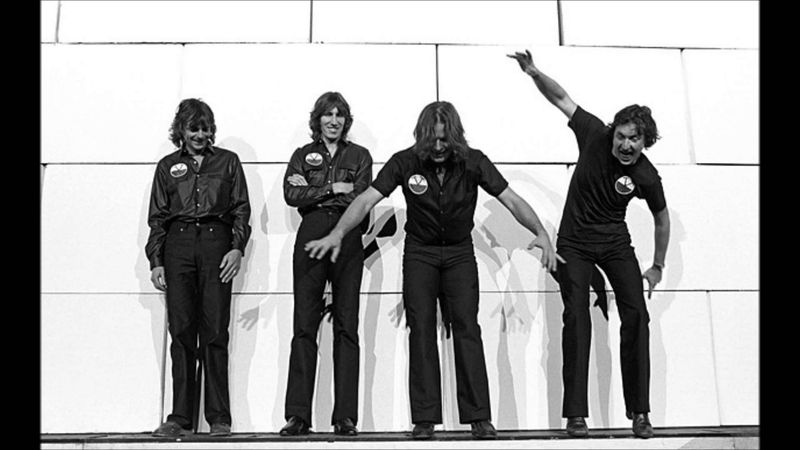Pink Floyd’s legacy is marked not only by their innovative music but also by their turbulent internal conflicts. This iconic rock band, known for its psychedelic sounds and elaborate live shows, has experienced more infighting than perhaps any other group in history. From the mental breakdown of their original frontman, Syd Barrett, to legal battles and creative differences, Pink Floyd’s story is as much about their struggles as it is about their music. Here, we explore ten pivotal moments that highlight the discord that defined Pink Floyd.
1. Syd Barrett’s Mental Breakdown vs. The Band (1967-1968)
Syd Barrett, the charismatic yet troubled founding member of Pink Floyd, was a creative genius whose mental state rapidly declined due to excessive LSD use. His unpredictable behavior, including erratic performances and withdrawal from reality, deeply concerned the band. This led to the painful decision to replace him, a move that none of the members took lightly. The guilt and regret from this decision would linger for years, casting a long shadow over the band’s future. The band’s musical direction had to pivot dramatically, losing Barrett’s avant-garde influence.
2. Roger Waters vs. David Gilmour (1973-1985)
With albums like ‘Wish You Were Here’ and ‘The Wall,’ tensions soared between bassist Roger Waters and guitarist David Gilmour. Their creative visions clashed, fueling a rivalry that was both artistic and personal. Waters, often seen as domineering, pushed for more control, while Gilmour fought to maintain his influence in the band’s direction. This power struggle became infamous, turning recording sessions into battlegrounds, where brilliant music emerged from chaos. Despite their friction, this era produced some of Pink Floyd’s most celebrated work, yet it left lasting scars on both men.
3. The Dark Side of the Moon – Credit Wars (1973)
‘The Dark Side of the Moon’ marked a revolutionary point in Pink Floyd’s career, but it was not without internal strife. Keyboardist Richard Wright faced the threat of being sidelined in the album’s credits, a move that sparked outrage. Simultaneously, Waters and Gilmour engaged in ongoing disputes over royalties, further complicating band dynamics. The album’s monumental success only intensified these conflicts. While the music captivated millions, behind the scenes, the fight for recognition and financial rights raged on, forever altering the band’s interpersonal relationships.
4. Animals – The Beginning of the End (1977)
The recording of ‘Animals’ saw Roger Waters tightening his grip on Pink Floyd’s creative process. His increasing control led to discontent within the band, especially affecting Richard Wright, who described the experience as ‘miserable.’ Waters’ vision dominated the album, sidelining other members’ contributions and setting the stage for future rifts. The album’s themes of societal critique mirrored the growing divisions within the group. This period marked a turning point, as the band slowly started unraveling under the weight of Waters’ ambition and the subsequent alienation among members.
5. The Wall – Richard Wright Fired (1979)
During the creation of ‘The Wall,’ Roger Waters took a drastic step by ousting Richard Wright from the band. This decision came amidst mounting pressure and tensions, as Waters sought complete control over the project. Despite being fired, Wright was later rehired as a session musician for the tour, a move that underscored the complex dynamics within the group. This era highlighted Waters’ authoritative influence, as well as the sacrifices other members had to endure. Wright’s departure was both a personal and professional blow, yet it didn’t halt the album’s phenomenal success.
6. The Final Cut – Gilmour’s Rebellion (1983)
‘The Final Cut’ was an album fraught with tension, primarily between David Gilmour and Roger Waters. Gilmour openly criticized Waters’ heavy-handed approach, feeling that the album’s anti-war theme overshadowed their musical identity. He famously remarked that it wasn’t a true Pink Floyd record, illustrating his dissatisfaction with the direction in which Waters was steering the band. This period was marked by rebellion and discontent, as Gilmour fought to preserve the band’s essence. The album became a symbol of division, reflecting the growing rift that threatened to dissolve the iconic group.
7. Roger Waters Quits – And Tries to Kill Pink Floyd (1985)
In 1985, Roger Waters took the bold step of leaving Pink Floyd, declaring the band a ‘spent force.’ Not content with merely departing, he pursued legal action to prevent the remaining members from continuing under the band’s name. This legal battle was a dramatic chapter in Pink Floyd’s history, as Waters sought to assert his dominance even in his absence. However, his efforts were thwarted, with the court ruling in favor of Gilmour and Mason. This legal skirmish underscored the lingering bitterness and competitive spirit that had long plagued the band, even as they endeavored to move forward.
8. A Momentary Lapse of Reason – Floyd Without Waters (1987)
After Roger Waters’ departure, David Gilmour and Nick Mason faced the daunting task of carrying on Pink Floyd’s legacy. They rebuilt the band, producing ‘A Momentary Lapse of Reason,’ which was met with mixed reviews. Waters dismissed it as a ‘clever forgery,’ undermining their efforts to reclaim the band’s identity. Despite the criticism, the album achieved commercial success, proving that Pink Floyd could continue without its former leader. This era signaled a new chapter, yet it was not free from the shadows of past conflicts, as the band forged ahead with resilience and renewed purpose.
9. The Division Bell – Wright Returns, Waters Rages (1994)
‘The Division Bell’ marked Richard Wright’s return to Pink Floyd, though it wasn’t welcomed by all. Roger Waters, still estranged from the band, criticized the album, dismissing it as ‘rubbish.’ Despite his disdain, the album outsold Waters’ solo projects, a testament to the band’s enduring appeal. Wright’s return was a moment of reunion and healing for some members, yet it couldn’t escape the shadow of past rivalries. This album symbolized both reconciliation and ongoing discord, as Pink Floyd navigated the complex terrain of their legacy.
10. The 2005 Reunion That Almost Happened (But Didn’t)
In 2005, Pink Floyd’s performance at Live 8 offered a glimmer of hope for reconciliation. Fans witnessed the iconic lineup, including Roger Waters, united on stage for the first time in over two decades. This momentary peace suggested the possibility of new beginnings. However, the harmony was short-lived, as old tensions quickly resurfaced. The reunion was bittersweet, filled with nostalgia yet underscored by unresolved differences. This brief convergence highlighted the enduring complexity of Pink Floyd’s relationships, as they grappled with the legacy of their shared past and the reality of their distinct futures.










